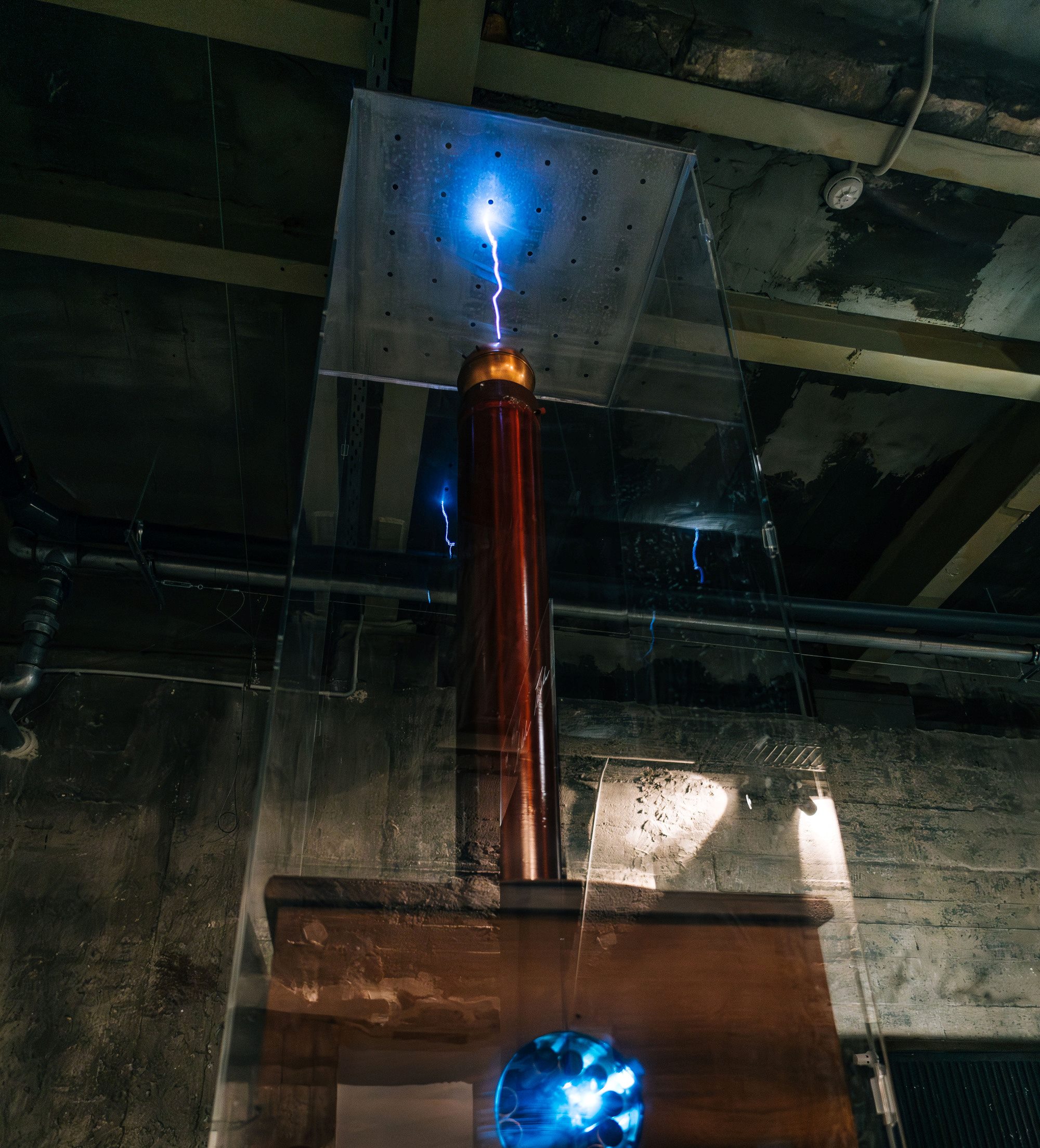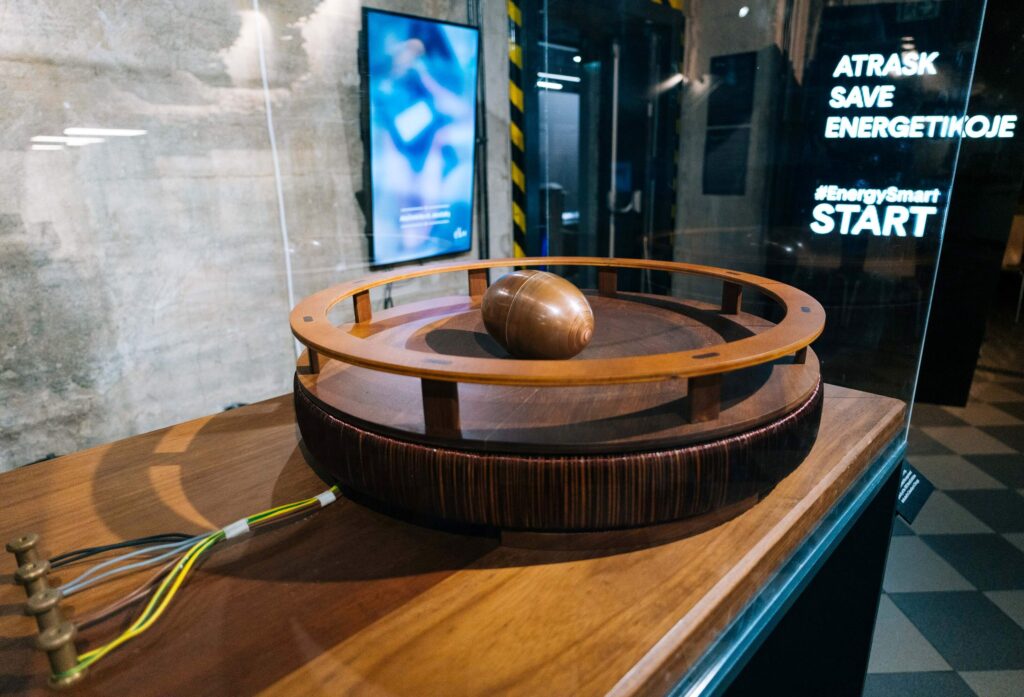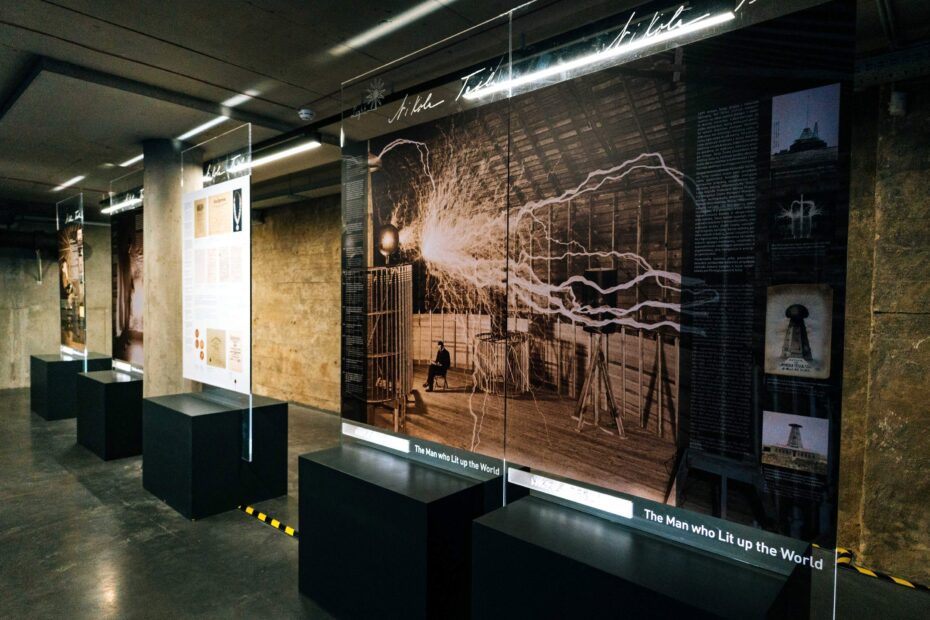The Energy and Technology Museum in Vilnius and the Nikola Tesla Technical Museum in Zagreb, in cooperation with the Embassy of the Republic of Croatia in Lithuania, present the international exhibition “Nikola Tesla – the Man Who Lit up the World”. The extraordinary life of the inventor was marked by innovative achievements, inventions and a unique vision of the future, which had a great influence on the development of science and technology.
On October 10th Markita Franulić, the head of the Nikola Tesla Technical Museum, and Renato Filipin, the curator of the exhibition, will be visiting Lithuania, inviting to a lecture about the famous inventor. It will be held in English.


A memorable personality
On the night of July 9th to 10th, 1856, when lightning flashed over the village of Smiljan (now in the territory of Croatia), Tesla was born. He became intensely interested in electricity under the influence of his physics professor, who demonstrated the basic principles of physics with devices he had invented himself.
Since Tesla’s inventions were not recognized in Europe, he travelled to the United States, New York, in 1884, where he was hired by Thomas Edison on the recommendation of his former employer Charles Batchelor. The reference had said: “I know two great men, and you are one. The other is this young man”. However, Tesla and Edison’s disagreements over the application of alternating current eventually turned into open hostility.


Today Tesla is credited with about 300 patents, and his contributions to physics are recognized all over the world. In 1960, the unit of measurement of magnetic induction in the International System of Units (SI) was named tesla (T). In his name, the Institute of Electrical and Electronics Engineers (IEEE) gives award to the most outstanding individuals for the contributions in the field of energy.
Tesla was a man of impressive physique, almost two meters tall, a cosmopolitan and a philanthropist. His impeccable elegance, sense for a fine and thoughtful choice of close friends highlight his powerful personality. On the other hand, exaggerated modesty, ascetic lifestyle and eternal obsessions made him exceptional and inscrutable.
Tesla spent the last years of his life feeding and caring for pigeons at a window of his hotel room. He died in 1943, in The New Yorker hotel suite no. 3327.


The bridge connecting Croatia and Lithuania
The international exhibition was created in 2006, on the occasion of the 150th anniversary of Tesla’s birth, and since then it has travelled around Europe. It is complemented by video works and two interactive exhibits: Tesla coil and a magnetic field experiment. After the Energy and Technology Museum opened the modern Transformation Hall, in the center of which are the two largest Tesla coils in the Baltic States, it became relevant to present the life and work of this inventor in Lithuania.
“The opening of the Tesla exhibition in Lithuania holds immense significance for the Croatian Embassy and the Nikola Tesla Technical Museum Zagreb who are the authors of this exhibition, transcending geographical boundaries to celebrate the enduring legacy of a brilliant inventor. This exhibition serves as a bridge connecting Croatia and Lithuania through the shared appreciation of Tesla’s contributions to science and technology,” said Dubravko Belavić, Chargé d’Affaires of the Embassy of the Republic of Croatia.
Belavić emphasized: “It offers a unique opportunity to showcase the genius of Tesla, a Croatian-born luminary, to a global audience while fostering cultural and diplomatic ties between the two nations. As the embodiment of innovation and creativity, Tesla’s inventions and visionary ideas continue to inspire future generations, making this exhibition a symbol of international cooperation and intellectual exchange. It underscores the importance of cultural diplomacy in strengthening relations between nations and commemorating the enduring influence of exceptional individuals like Tesla on our interconnected world”.


Tesla predicted: “The intellect of men will govern the motion of the stars”. He is the great 19th-20th century mind, a mad genius, as called by his contemporaries, undoubtedly one of the greatest inventors of all time, whose creations are still used today.
“We are proud to present this exhibition in Vilnius, at the Energy and Technology Museum, and we sincerely thank the Embassy of the Republic of Croatia and the Nikola Tesla Technical Museum for the opportunity to introduce museum visitors to Tesla’s extraordinary life and technical work,” said the director of the museum, Mykolas Bistrickas. – “His inventive genius, innovative ideas and groundbreaking contributions to science and future technologies demonstrate the incredible potential of human intellect and the capacity for visionary thinking. Tesla is a perfect example of how limitless human intelligence can be. His work continues to inspire engineers and scientists to reach the heights of the human mind.”
The exhibition “Nikola Tesla – the Man Who Lit up the World” will be on display until December 3rd in the Energy and Technology Museum.

